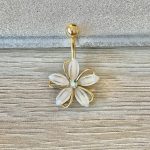Introduction
When it comes to purchasing a jadeite gemstone, understanding the factors that affect of jadeite gemstone price is crucial. This guide will help you navigate the complexities of the jadeite market and find the best deals available. Whether you are a seasoned collector or a first-time buyer, this information will be invaluable.

Understanding Jadeite Gemstones
Jadeite is a highly valued gemstone known for its vibrant green color and durability. It has been cherished for centuries, especially in Asian cultures. The value of a jadeite gemstone depends on several factors, including color, clarity, cut, and carat weight. High-quality jadeite with a rich, even color and few inclusions can command very high prices.
Color is the most important factor. Deep, vivid greens, such as imperial jade, are the most desirable. Clarity also plays a significant role; fewer inclusions mean a higher price. Additionally, the cut and size of the stone can impact its value. Larger, well-cut stones are generally more valuable. Jadeite’s cultural significance and rarity make it a highly sought-after gemstone, often commanding premium prices in the market.
Factors Affecting Jadeite Prices
Color:
Importance: Color is the most critical factor in determining the value of jadeite gemstone price.
Desirable Colors: Deep, vivid greens are the most sought after. The color should be uniform and consistent throughout the stone.
Less Desirable Colors: Lighter or more muted greens, as well as other colors like white, lavender, or black, are generally less valuable.
Clarity:
Importance: Clarity plays a significant role in the pricing of jadeite.
High Clarity: Stones with fewer inclusions (internal flaws) and a clear, transparent appearance are more valuable.
Low Clarity: Stones with many inclusions, cracks, or cloudiness are less desirable and command lower prices.
Cut and Size:
Cut: The cut of the jadeite can greatly impact its value. A well-cut stone that maximizes its natural beauty and color will be more valuable.
Size: Larger stones are generally more valuable, especially if they maintain high quality in terms of color, clarity, and cut. However, the size must be balanced with the other factors; a large but low-quality stone may not be as valuable.
Origin:
Burmese Jadeite: Jadeite from Myanmar, particularly from the mines in the Kachin State, is considered the highest quality and commands the highest prices.
Other Origins: Jadeite from other regions, such as Guatemala, Russia, and Canada, may also be of high quality but is generally less valuable than Burmese jadeite.

Transparency:
High Transparency: Transparent or “glassy” jadeite is highly valued. The more light that can pass through the stone, the more valuable it is.
Low Transparency: Opaque or semi-transparent jadeite is less valuable, even if the color and clarity are good.
Treatments:
Untreated Stones: Natural, untreated jadeite is the most valuable. These stones have not subjected to any enhancements, such as dyeing or impregnation.
Treated Stones: Treated jadeite, which has enhanced to improve its color or clarity, is less valuable. It is important to know whether a stone has been treated, as this can significantly affect its price.
Craftsmanship:
Overall Craftsmanship: The quality of the craftsmanship, including the setting and design of the piece, can also impact the value of the jadeite.
Artistic Value: Pieces that are intricately carved or set in high-quality settings may command higher prices due to their artistic and aesthetic value.
Understanding these factors will help you make an informed decision when purchasing jadeite, ensuring that you get the best value for your investment.
Is Jadeite the Most Expensive Gem?
While jadeite is one of the most expensive gemstones, it is not always the most expensive. Diamonds, rubies, and sapphires can sometimes fetch higher prices per carat. However, top-quality imperial jadeite, which is a rare, emerald-green variety, can sell for millions of dollars. The rarity and cultural significance of jadeite make it a highly sought-after gemstone.
In some cases, imperial jadeite can be more expensive than diamonds. This is due to its rarity and the cultural demand, especially in East Asia. The unique properties of jadeite, such as its durability and beauty, also contribute to its high value. For collectors and investors, jadeite can be a valuable addition to their portfolio, often appreciating in value over time.
Evaluating Jadeite Quality
To evaluate the quality of a jadeite gemstone, start by examining its color. Look for a uniform, intense green without any yellow or gray undertones. Next, check for inclusions. The fewer and less noticeable they are, the better. The cut should enhance the stone’s natural beauty, and the size should be proportional to the overall design.
Transparency is another important factor. High-quality jadeite should be transparent or semi-transparent, allowing light to pass through. The texture of the stone should be smooth and even, with no visible cracks or blemishes. Additionally, the luster of the stone, which refers to its surface shine, should be high. A well-polished jadeite will have a glassy, reflective surface.

Authenticity and Certification
Authenticity is a critical factor when buying jadeite. Many imitations and treated stones are on the market, so it is essential to purchase from reputable dealers. Always ask for a certificate of authenticity and consider having the stone appraised by an independent gemologist. This ensures that you are getting a genuine, high-quality gemstone.
Reputable dealers will provide detailed documentation, including the origin of the stone, any treatments it has undergone, and its overall quality. Certificates from recognized gemological laboratories, such as the Gemological Institute of America (GIA) or the American Gem Trade Association (AGTA), add credibility to your purchase. These certificates can also be useful for insurance purposes and future resale.
Market Trends and Pricing
The jadeite market is influenced by various factors, including supply and demand, economic conditions, and cultural trends. Prices can fluctuate, so it is important to stay informed about current market conditions. Collectors and investors often follow market trends closely to make informed purchasing decisions.
Supply and demand play a significant role in the jadeite market. Limited availability, especially for high-quality stones, can drive up jadeite gemstone price. Economic conditions, such as changes in currency values and global trade policies, can also impact the market. Cultural trends, particularly in East Asia, where jadeite is highly valued, can influence demand and, consequently, prices. Staying informed about these trends can help you make strategic purchases.
Finding the Best Deals
To find the best deals on jadeite gemstones, follow these steps and tips:
Shop Around and Compare Prices:
Explore different sources to compare jadeite gemstone price. This includes online marketplaces, auctions, and specialized dealers.
Visit multiple sellers and platforms to get a comprehensive view of the market.
Utilize Online Marketplaces:
Start with popular online marketplaces like eBay and Etsy.
Check the seller’s reputation by reading reviews and ratings.
Verify the authenticity of the stone by asking for detailed descriptions, high-quality photos, and certification if available.
Participate in Auctions:
Consider both online and in-person auctions as they can offer great deals.
Inspect the stone carefully before bidding, either in person or through detailed images and descriptions.
Understand the auction process, including bidding rules and any additional fees.
Visit Specialized Dealers:
Seek out specialized dealers who focus on jadeite.
These dealers often have a wide selection and can provide expert advice.
Ask about the origin, quality, and any treatments the stone may have undergone.

Be Prepared to Negotiate:
Many sellers are willing to offer discounts, especially for bulk purchases.
Don’t hesitate to negotiate the price. Be polite but firm, and be ready to walk away if the deal isn’t right.
Do Your Research:
Educate yourself about the factors that affect jadeite prices, such as color, clarity, cut, size, origin, transparency, and treatments.
Set a budget before making a purchase to avoid overspending.
Network with Other Collectors:
Join gemstone forums and communities to connect with other collectors.
Share information and experiences, and ask for recommendations on good deals and reputable sellers.
Attend gem shows and events to meet dealers and collectors in person.
By following these steps, you can find the best deals on jadeite gemstones and make informed purchasing decisions.

Conclusion
Understanding the factors that influence jadeite gemstone prices is essential for making a wise investment. By considering color, clarity, cut, and carat weight, you can evaluate the quality of a jadeite gemstone. Authenticity and certification are also crucial, as they ensure you are getting a genuine, high-quality gemstone. Staying informed about market trends and shopping around can help you find the best deals. With this knowledge, you can confidently navigate the jadeite market and make a smart purchase. Remember, jadeite gemstone price is just one aspect of the overall value and beauty of this remarkable gem.

